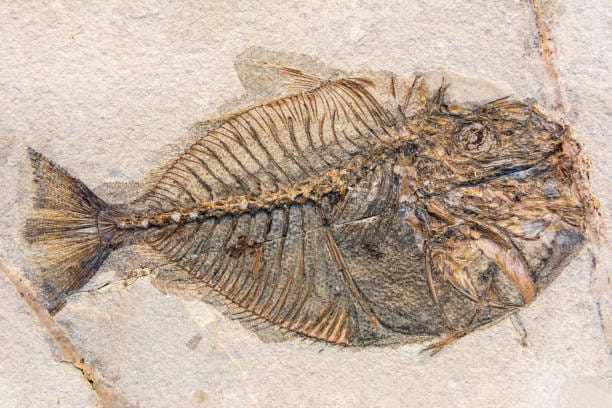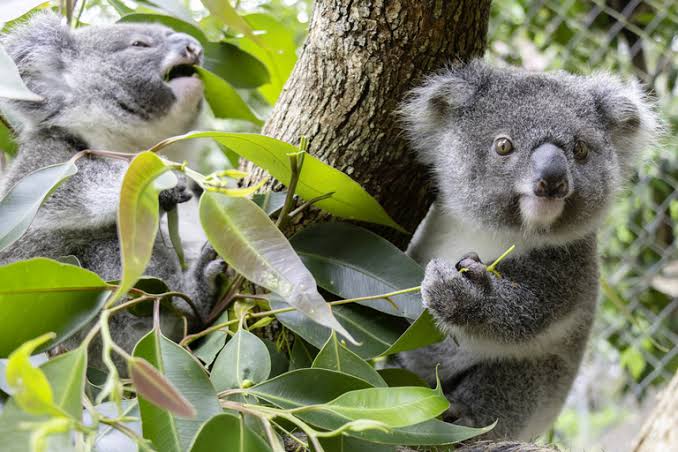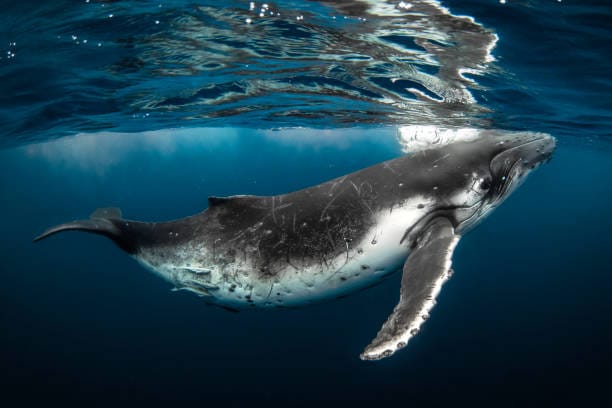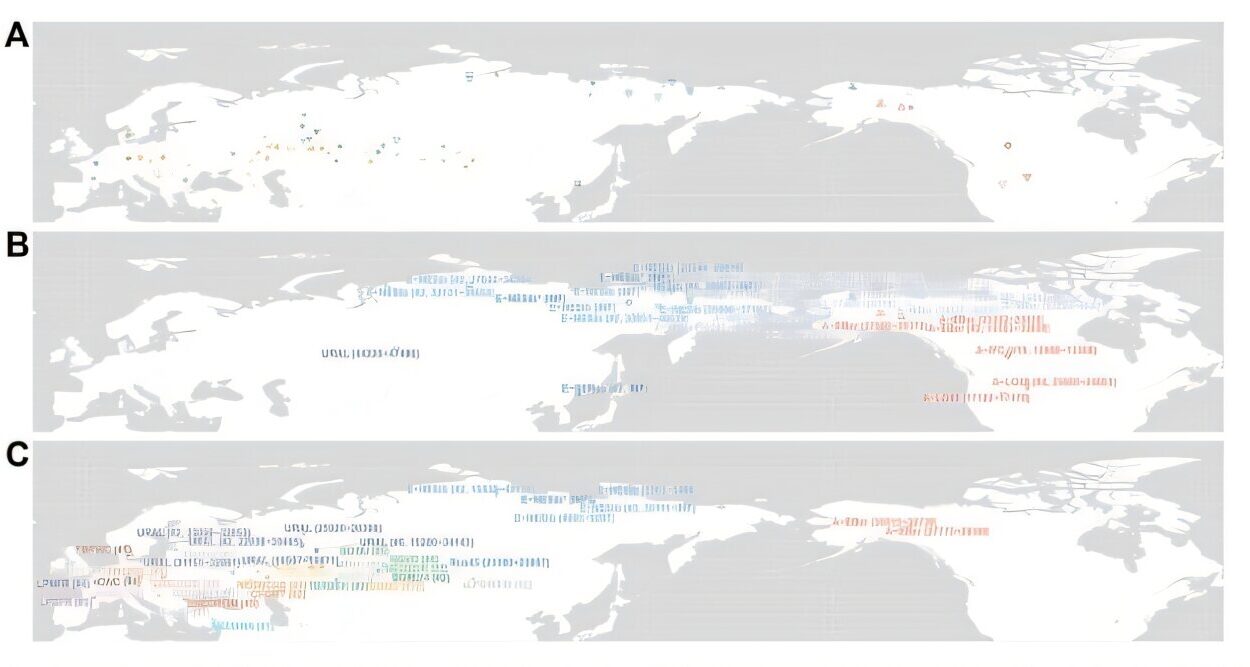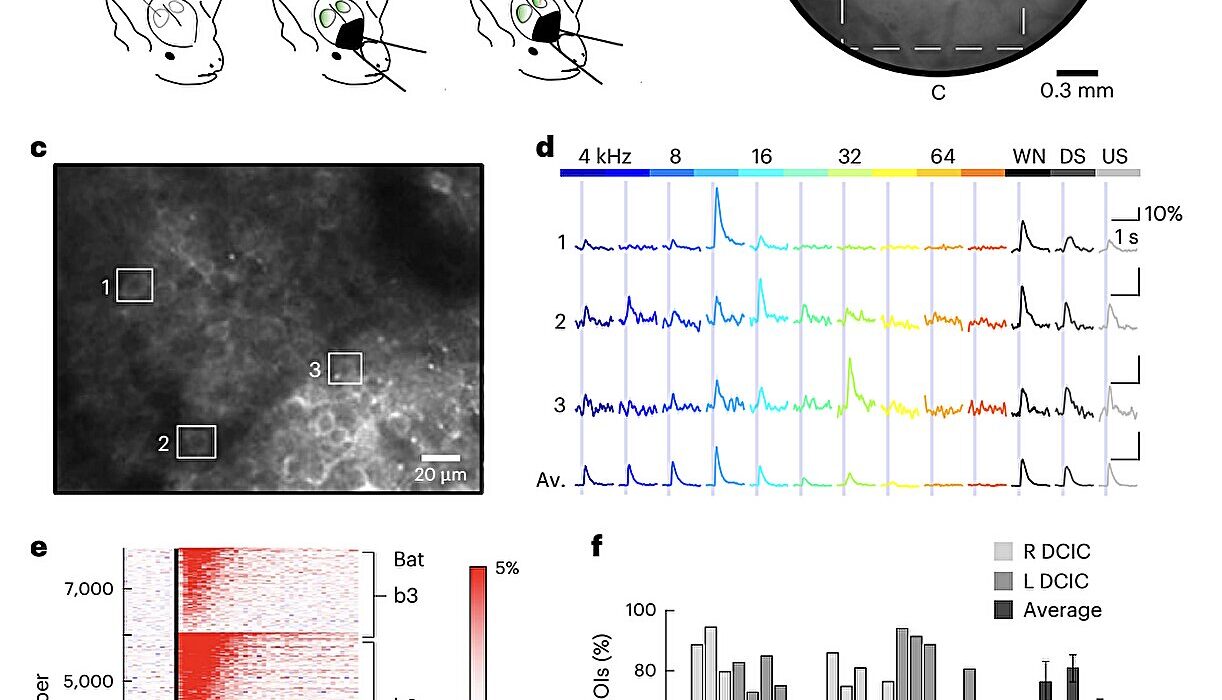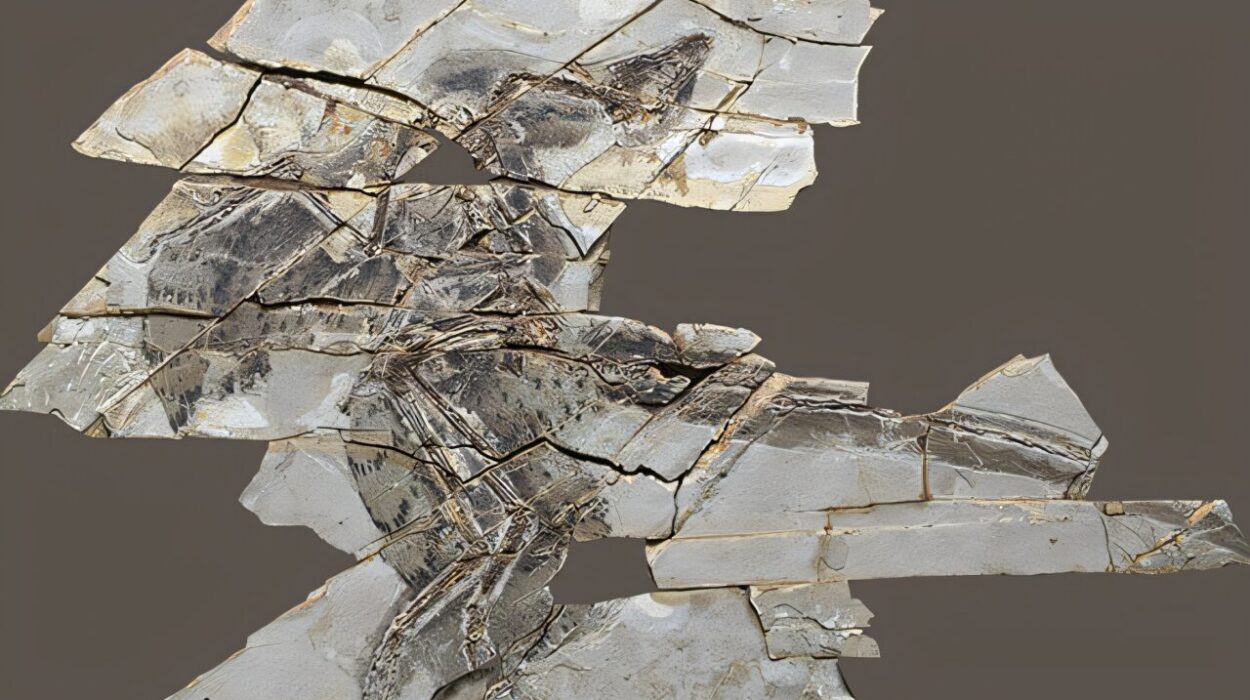Imagine walking through a vast desert where the wind has long since stilled. Beneath your feet, the sand is hard, petrified into rock over eons. You kneel, brush away dust, and there it is: not a bone, not a shell, but something far more intimate—a footprint. Three toes splayed in ancient mud, pressed into the earth by a creature that vanished millions of years ago. That single impression is all that remains. But in it lies a story.
This is a trace fossil. Unlike the dramatic skeletons displayed in museums, trace fossils are the whispers of prehistoric behavior—the delicate records of moments lived, paths taken, lives in motion. They are not the remains of the creature itself, but the records of its activity. Footprints, burrows, feeding marks, even feces—each one a sign that something once passed this way.
If body fossils are the statues of ancient life, trace fossils are its diary. They tell us not just what lived, but how it lived. In that way, they are perhaps the most human of all fossils—evidence of interaction, struggle, instinct, and survival. And they offer a rare chance to walk beside the past, quite literally, step for step.
The Science of Traces
In paleontology, trace fossils are formally called ichnofossils, from the Greek word ichnos, meaning “track” or “trace.” They belong to a distinct category of fossil evidence. Where a body fossil represents the preserved remains of an organism—such as bones, teeth, or shells—a trace fossil represents the activity of that organism. It’s the imprint of life’s motion rather than its physical form.
Trace fossils can take many shapes: tracks left by feet, trails left by crawling, burrows dug into ancient sea beds, nests carved into hardened soil, and even coprolites—fossilized droppings. Each one is like a signature written into the Earth’s history, preserved by the right combination of sediment, pressure, time, and luck.
Scientists who specialize in trace fossils are called ichnologists, and their work often resembles detective work. A single trace can be puzzling, but a pattern of traces can reveal migration paths, pack behavior, or even predator-prey interactions. When paired with geological context, they can also tell us about ancient environments: whether the land was dry or swampy, whether the waters were calm or turbulent, and what sort of ecosystem once thrived there.
This makes trace fossils invaluable, especially in places where body fossils are scarce. In some rocks, we may find no bones at all—just thousands of parallel worm burrows, rippling across the stone like a frozen tide. Yet from those humble tunnels, we can reconstruct a living world.
Born in a Moment, Preserved Forever
The formation of a trace fossil is, at its heart, a race against time. Most tracks vanish quickly—washed away by rain, trampled by others, or eroded by wind. But sometimes, conditions align in just the right way.
Imagine a muddy shoreline at low tide. A dinosaur strolls by, its feet pressing into the wet sediment. Each footfall compresses the layers below, subtly altering the structure of the ground. Soon after, a storm arrives, blanketing the area in fine silt. The prints are sealed beneath layers of new sediment, preserved from erosion.
Over time, those layers harden. Minerals infiltrate the sediments, binding them into stone. What was once soft mud becomes shale or sandstone, and the impression—the trace—becomes a fossil. This process, called lithification, is the bridge between biology and geology. Life becomes stone.
This preservation is exceedingly rare. For every footprint fossilized, billions more were lost. This rarity makes trace fossils all the more precious: each one is the surviving fragment of an entire world’s worth of vanished behaviors.
The Footsteps of Giants
Some of the most iconic trace fossils are dinosaur trackways. These ancient paths offer a cinematic glimpse into the lives of creatures we can scarcely imagine. In Glen Rose, Texas, massive sauropod footprints stretch across a limestone riverbed—giant, rounded impressions left by beasts the size of buses. Sometimes, these are accompanied by the three-toed prints of a carnivorous theropod, suggesting a tense, possibly predatory encounter.
Trackways allow scientists to calculate stride length and speed, and from that, to estimate how fast a dinosaur was moving. Were they walking? Running? Limping? In some cases, we can even see how a dinosaur shifted its weight, turned its body, or slipped in the mud. A few prints reveal something almost unthinkable: a tail dragging behind, or a wing brushing the ground—motion made immortal.
These fossils turn abstract data into drama. They make prehistoric life feel real. Not a concept in a textbook, but a presence—an animal moving through space, unaware that each step would echo through deep time.
In the Absence of Bones
One of the most remarkable things about trace fossils is their ability to capture life that otherwise leaves no remains. Many small or soft-bodied creatures—worms, jellyfish, early arthropods—lack the hard parts needed to fossilize as body fossils. But they do leave behind trails, burrows, or feeding marks.
In fact, some of the oldest trace fossils predate any known body fossils. Around 550 million years ago, in the Ediacaran period, simple organisms etched trails across the seafloor. These primitive impressions—wiggling lines and shallow grooves—suggest mobility, perhaps even purposeful behavior, long before animals had developed skeletons.
This makes trace fossils essential for understanding the dawn of complex life. Where body fossils are absent, trace fossils speak in their place. They testify not just to the existence of life, but to its agency. These were not static organisms—they moved, explored, fed, and responded to their environment.
Even in more recent times, trace fossils often outnumber body fossils. In the Carboniferous coal beds of North America, thousands of fossilized tree roots and animal burrows lace the stone, painting a vivid picture of swampy forests teeming with insects and amphibians. Many of the animals that made those traces have never been found in skeletal form. Yet we know they were there—because they left their mark.
Coprolites and the Tales They Tell
Perhaps the most underappreciated of all trace fossils are coprolites, the fossilized remnants of feces. While they may not dazzle like teeth or claws, they are biological treasure troves.
A well-preserved coprolite can contain bone fragments, shell bits, plant fibers, and even microscopic remains of parasites. These inclusions allow scientists to reconstruct an animal’s diet with astonishing precision. What did ancient sharks eat? How did herbivorous dinosaurs digest plant matter? Coprolites have helped answer these questions.
In some cases, coprolites offer evidence of behavior otherwise impossible to deduce. In one striking example, a spiral-shaped coprolite revealed that the producer had a corkscrew-shaped gut—suggesting a specialized digestive system. In another, a coprolite was found within a preserved intestine of a fossil fish, caught in the act of digestion.
They may not be glamorous, but coprolites are honest. They tell the truth about what life ate, how it lived, and sometimes, even how it died.
Trace Fossils on the Ocean Floor
Beneath the waves, the story of trace fossils continues. The ancient seabeds are some of the richest sources of ichnofossils, thanks to their often low-energy environments and rapid sedimentation. Here, we find burrows, feeding trails, and resting marks made by long-extinct marine creatures.
Cruziana, for example, is a common trace fossil attributed to trilobites—early arthropods that scuttled along the seafloor during the Paleozoic Era. These bilobed trails often show a central groove flanked by leg marks, suggesting the animal’s motion and behavior.
Other burrows, such as Skolithos or Thalassinoides, are vertical or branching tunnels created by worms, crustaceans, or other invertebrates. These structures help geologists identify the depositional environments of ancient rocks—whether they formed in shallow tidal zones, deep marine basins, or coastal lagoons.
By mapping the types and distribution of trace fossils in sedimentary layers, scientists can reconstruct ancient marine ecosystems with surprising detail. Even when the body of the creature is gone, the tunnel it dug, the groove it left, or the path it took survives.
Misleading Traces and the Art of Interpretation
Of course, not all trace fossils are easy to interpret. Some are ambiguous, bizarre, or misleading. A loop in the sand—was it a swimming jellyfish, or a falling clam? A pattern of holes—feeding marks or gas escape structures? Differentiating between biological and non-biological traces is a constant challenge.
Some early scientists even mistook trace fossils for fossils of plants or strange animals. The spiral burrow of a marine worm might be cataloged as a fossilized plant root. A meandering feeding trail might be seen as the body of a snake-like creature.
This is where ichnology becomes part art, part science. Interpretation depends not only on the shape of the trace, but also on its context: the sediment it’s in, the depth, the orientation, the associated structures. Like reading ancient scripts, ichnologists must decipher the meaning behind the marks.
Occasionally, reinterpretations dramatically change our understanding. What was once thought to be a primitive animal might turn out to be a mere trail. And what looked like nothing at all may emerge, under scrutiny, as the signature of a complex life form.
Trace Fossils Beyond Earth?
The idea that trace fossils could exist beyond our planet is no longer mere speculation. As we explore Mars and other celestial bodies, the possibility of ancient microbial life—or even more complex organisms—is a serious scientific inquiry.
Some researchers believe that if life ever existed on Mars, its traces might still be preserved in sedimentary rocks. Not body fossils, necessarily—but stromatolite-like structures, microbial mats, or burrows. Already, rovers like Curiosity and Perseverance are equipped with instruments designed to detect such signs.
The search for extraterrestrial trace fossils would follow the same principles: looking for patterns inconsistent with random geology, seeking repeating structures, textures, or alignments. In the absence of skeletal remains, it might be these humble traces—grooves in rock, clusters of tiny tubes—that first whisper of life beyond Earth.
Why Trace Fossils Matter
At first glance, a trace fossil may seem small, insignificant—a smudge in stone. But what it represents is anything but. It is a moment of life, frozen not in the flesh, but in action. A creature moved, fed, rested, struggled—and left behind the record of its passage.
These fossils bridge the gap between the organism and its world. They tell us how creatures interacted with their environment, with each other, with the rhythms of tide and season. They are the choreography of vanished lives.
In a deeper sense, trace fossils resonate because they remind us of our own impermanence. We too leave footprints—some literal, some metaphorical. Like the trilobite scuttling across the Cambrian seafloor or the dinosaur trudging through Jurassic mud, we inscribe our presence into the world. Not all of it endures. Most is washed away. But some of it—just maybe—becomes fossilized in the great story of Earth.
A Living Legacy
Today, scientists and fossil hunters alike continue to discover new trace fossils—some as fresh as yesterday’s tidal zone, others as ancient as the dawn of animals. Each discovery adds a page to the epic biography of life on Earth.
Trace fossils remind us that even the simplest creatures—those that never had bones, those that left no corpses—were part of the grand unfolding of evolution. They remind us that life is not just a static thing to be cataloged, but a dynamic process—a dance, a trail, a trace.
And in a strange and beautiful twist, they remind us that presence can be most powerful in absence. That what endures is not always the body, but the mark it leaves behind.
